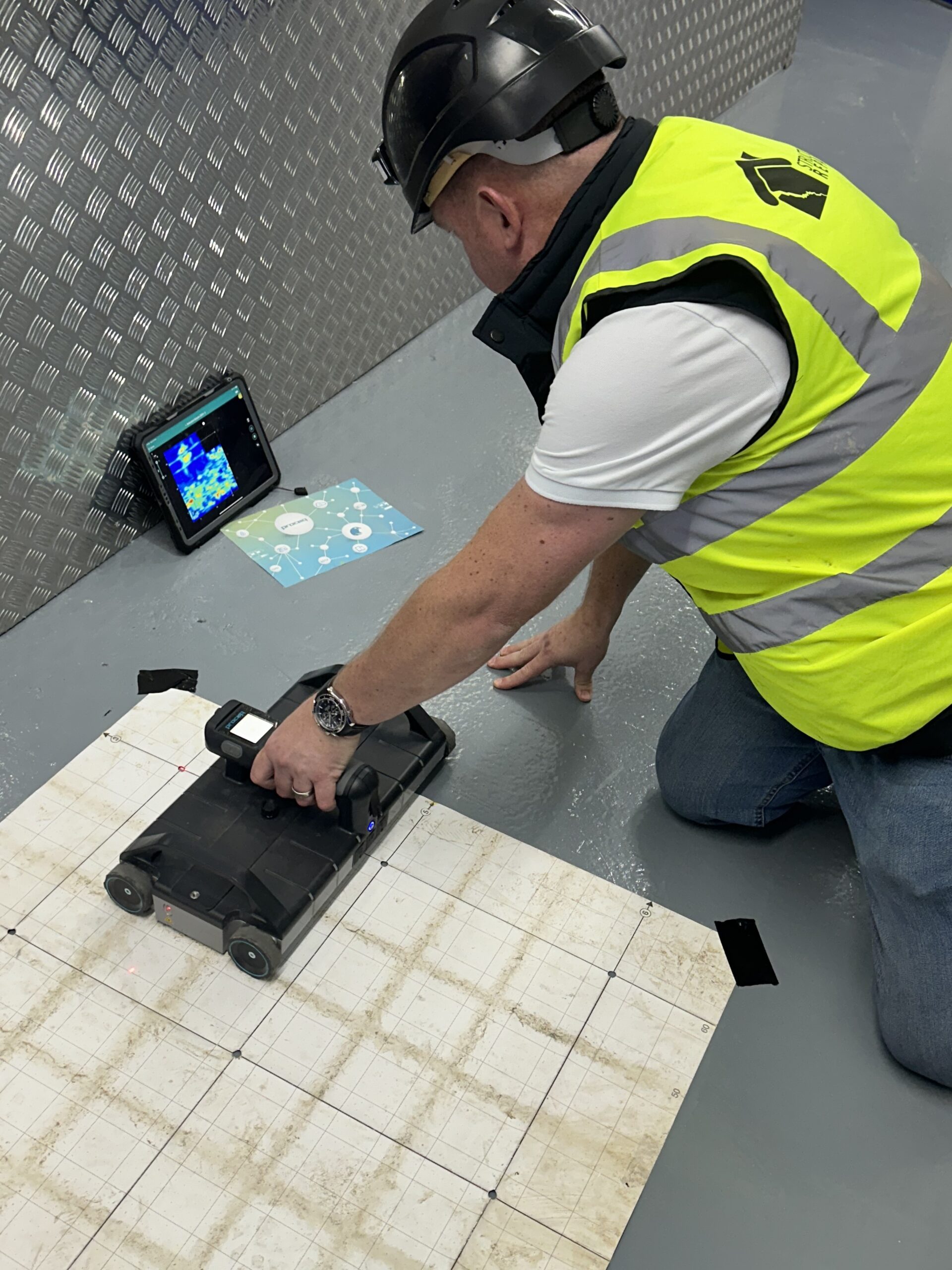Comprehensive Overview to Concrete Scanning Technologies
Comprehensive Overview to Concrete Scanning Technologies
Blog Article
Beyond the Surface Area: Leveraging Advanced Concrete Scanning Techniques for Unmatched Precision and Insight
Advanced concrete scanning strategies have arised as crucial devices in this pursuit, using a glance below the surface area to reveal a world of vital understandings. By taking advantage of cutting-edge innovations, experts can reveal abnormalities, evaluate the problem of concrete frameworks, and make informed decisions that form the training course of jobs.
Value of Advanced Concrete Scanning
The relevance of making use of advanced concrete scanning techniques hinges on the exceptional accuracy they supply for spotting sub-surface anomalies and making sure architectural honesty. By employing innovative modern technologies such as ground-penetrating radar (GPR), electro-magnetic induction, and advanced sonar imaging, construction experts can dig underneath the surface area of concrete frameworks with a degree of precision that much goes beyond traditional assessment approaches. Concrete Scanning. These methods allow the identification of covert threats like rebar corrosion, voids, conduits, or post-tension cables that can endanger the security and security of a framework with time
In addition, progressed concrete scanning gives important insights right into the overall condition of a concrete element without the demand for intrusive steps, reducing the risk of triggering damage during the assessment procedure. The capability to pinpoint the exact location and depth of potential problems permits targeted fixings and maintenance, inevitably extending the lifespan of the framework and enhancing its performance. Fundamentally, the value of sophisticated concrete scanning can not be overstated in the world of building and infrastructure upkeep, where precision and reliability are vital.
Kinds Of Cutting-Edge Technologies

Anomalies and Issue Discovery

In addition to GPR, concrete scanning methods like thermography and impact-echo testing are likewise efficient in detecting flaws and anomalies. Thermography uses infrared innovation to determine variations in surface temperature level, indicating potential locations of problem such as delamination or dampness access. On the various other hand, impact-echo testing includes analyzing acoustic actions to detect gaps, fractures, and various other defects within the concrete. By leveraging these advanced techniques, experts can proactively deal with structural issues, guaranteeing the longevity and safety and security of concrete frameworks.
Assessing Concrete Condition
How can designers accurately review the problem of concrete structures to guarantee their durability and safety and security? Examining the concrete condition is an important aspect of keeping facilities honesty. Different innovative concrete scanning strategies are employed for this function. Ground-penetrating radar (GPR) is commonly made use of to evaluate the inner structure of concrete, identifying spaces, splits, and other abnormalities that may endanger its strength. Furthermore, impact-echo screening can offer insights right into the thickness and honesty of concrete elements. Ultrasonic pulse speed screening is another useful method for assessing concrete high quality by gauging the speed of acoustic waves via the product.
Moreover, visual evaluation stays a fundamental part of concrete condition evaluation. Engineers aesthetically take a look at the surface area for indicators of wear and tear, such as spalling, breaking, or discoloration. Integrating non-destructive testing techniques with visual assessments enables a thorough analysis of concrete problem, making it possible for engineers to recognize prospective concerns early on and implement timely upkeep or repairs. By leveraging these innovative strategies, designers can make sure the long-lasting longevity and safety and security of concrete frameworks.
Enhancing Decision-Making Processes
In the realm of infrastructure management, optimizing decision-making procedures is vital for making certain the reliable upkeep and durability of concrete frameworks. Enhanced decision-making processes in concrete administration include using advanced scanning methods to gather thorough information on the problem of structures. By leveraging modern technologies such as ground-penetrating radar and 3D imaging, stakeholders can make educated decisions relating to repair work, support, or replacement methods.
These advanced scanning methods give very useful insights right into the interior composition of concrete, recognizing possible issues such as spaces, splits, or corrosion that might not be noticeable externally. This level of thorough information permits positive upkeep planning, lessening the threat of architectural see it here failures and enhancing the general life-span of concrete frameworks.
In addition, by incorporating electronic documentation and analysis devices right into the decision-making procedure, stakeholders can track the advancement of concrete problems with time, enabling predictive maintenance strategies and optimizing resource allocation. Ultimately, the integration of advanced concrete scanning strategies boosts decision-making procedures by giving unparalleled precision, understanding, and pop over here performance in framework monitoring.
Final Thought
Finally, progressed concrete scanning methods use unmatched accuracy and understanding in finding anomalies, flaws, and examining the condition of concrete frameworks. By leveraging cutting-edge modern technologies, decision-making procedures can be improved, leading to even more enlightened and effective options for preserving and repairing concrete framework. These methods play a crucial duty in making sure the safety and security and durability of concrete frameworks, making them an indispensable device in the area of building and design.
Moreover, progressed concrete scanning offers invaluable understandings into the general condition of a concrete aspect without the need for invasive actions, lessening the threat of triggering damages during the analysis process - Concrete Scanning. One more cutting-edge innovation is 3D X-ray scanning, which gives in-depth pictures of the inner structure of concrete, using valuable info without the demand for destructive testing. Furthermore, Concrete Cover Meters are made use of to measure the density of concrete cover over support bars accurately. Improved decision-making procedures in concrete monitoring involve utilizing sophisticated scanning strategies to collect comprehensive information on the problem of frameworks.In conclusion, advanced concrete scanning methods provide you can try this out unparalleled accuracy and insight in finding abnormalities, defects, and evaluating the condition of concrete frameworks
Report this page